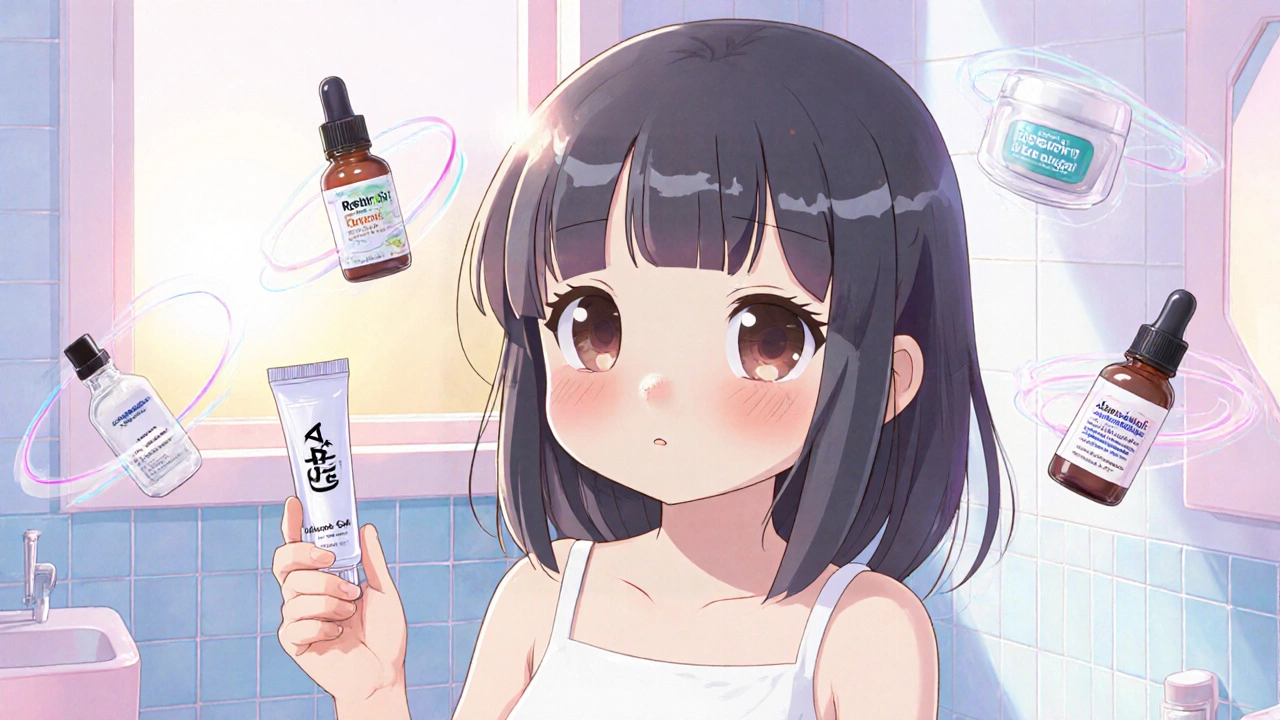Tretinoin: Full Overview for Acne, Skin Health, and Safe Use
When working with Tretinoin, an FDA‑approved topical retinoid used to treat acne and improve skin texture. Also known as all‑trans retinoic acid, it belongs to the broader class of Retinoids, compounds derived from vitamin A that regulate skin cell growth and is frequently prescribed for Acne, a common inflammatory skin condition affecting teenagers and adults alike. Understanding how Tretinoin fits into the retinoid family helps you see why it can clear breakouts, reduce fine lines, and even treat certain types of leukemia when given systemically.
What You Need to Know About Tretinoin
Tretinoin works by speeding up the turnover of skin cells, which pushes clogged pores to the surface faster and prevents new blockages. This mechanism creates a triple benefit: fewer blemishes, smoother texture, and a more even tone. Because it’s a potent molecule, the skin can react with redness, peeling, or temporary irritation—effects that usually fade as the skin builds tolerance. The typical starting concentration ranges from 0.025% to 0.05% for beginners, with higher strengths (up to 0.1%) reserved for resistant cases or dermatologist‑guided plans. Most users apply a pea‑sized amount at night on a clean, dry face, avoiding the eye area and any broken skin. Consistency is key; missing applications slows progress, while over‑application can increase irritation.
Beyond acne, Tretoin’s retinoid nature makes it useful for treating hyperpigmentation, milia, and early signs of photo‑aging. When paired with a gentle moisturizer and a broad‑spectrum sunscreen, it can become a cornerstone of a preventative skin‑care routine. However, it’s not a one‑size‑fits‑all solution. People with eczema, rosacea, or who are pregnant should steer clear, as retinoids can exacerbate those conditions or pose fetal risks. Always discuss your full medical history with a healthcare professional before starting a Tretinoin regimen.
The drug market offers many variations—generic creams, branded gels, and even oral formulations like isotretinoin for severe cystic acne. While the active ingredient is the same, formulation differences affect absorption rates and side‑effect profiles. For example, gel bases tend to feel lighter and dry faster, making them popular for oily skin, whereas cream bases provide extra hydration for dry or sensitive types. Knowing which formulation matches your skin type can spare you from unnecessary irritation and improve results.
If you’re considering buying Tretinoin online, treat the process like any other prescription purchase. Verify the pharmacy’s license, compare prices, and ensure the product lists the exact concentration you need. Generic versions typically cost less but must meet the same quality standards as brand names. Look for clear dosage instructions, storage recommendations, and a reputable return policy. By staying vigilant, you can get the medication you need without overpaying or risking counterfeit products.
Below you’ll find a curated list of articles that dive deeper into each of these topics—comparisons of Tretinoin with other retinoids, detailed dosage guides, side‑effect management tips, and safe online buying strategies. Whether you’re a newcomer looking for a gentle starter routine or a seasoned user fine‑tuning your regimen, the posts ahead cover the full spectrum of information you’ll need to make confident, informed choices about Tretinoin.
A‑Ret Gel vs Other Retinoids: Which Is Best for Your Skin?

A clear, side‑by‑side comparison of A‑Ret Gel (tretinoin) with top retinoid alternatives, plus a decision guide and practical usage tips.
read more



